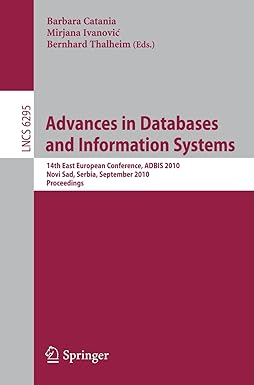Answered step by step
Verified Expert Solution
Question
1 Approved Answer
Construct a data model using an UML class diagram to support a part of an online team project application: TeamRabbit ( TR ) . This
Construct a data model using an UML class diagram to support a part of an online
team project application: TeamRabbit TR This is a drastically simplified system
that does not support many functions. Make reasonable assumptions.
The basic idea is to support teams to define, store, access, label, and update
projects and subprojects. Access to the system may be made through multiple
types of devices such as computers, smartphones, web services, etc.
Users must be registered as TR members to use TR The system should store the
last name, first name, a unique screen name, and an optional working email
address for every member. The email address does not need to be unique. A unique
member id is assigned by the system and the start time of the member should be
recorded. A member may be referred by another member to join TR and the
referrer should be recorded.
Each member must have a username and a password to access TR However, an
account may be used by a person other than a TR member, such as a TR staff or a
TR system administrator. The management and administration module of the
system is not modeled in this assignment.
A member can create any number of teams. The creator of a team is known as the
owner of the team. Each team may also have managers who have heightened
privileges relative to other team members. However, only the owner can change
the managers of a project. The owner can also be a manager. A project can have
any number of members. The time when a TR member joins a team should be
recorded.
A member may have many roles in a team. Some of these role types are predefined
by TR for example, librarian, developer, team leader, supervisor, consultant, etc.
They are standard role types. Some roles are teamspecific and can be defined by a
manager of the team. For example, a software team, S may define the team
roles: modeler, programmer, technical writer, etc. When a teamspecific role is
defined, an optional description and a creation time should be stored together with
the role name. The manager who defined the role should also be noted. Every role,
standard or userdefined teamspecific has a role level. The role level is an
integer with a definition. Many roles can have the same role level.
A team has a unique id The teams name should be stored with the team creation
time and an optional description. A team has any number of projects. A project has
a name and a description. A project may have any number of subprojects. There is
no limit on the number of levels of subprojects. A project can be created by any
team manager. The creator of a task should be noted. A project may have an
expected completion time and an actual completion time. A program may be
assigned to a team member. The creator and the assignee may or may not be the
same person.
Step by Step Solution
There are 3 Steps involved in it
Step: 1

Get Instant Access to Expert-Tailored Solutions
See step-by-step solutions with expert insights and AI powered tools for academic success
Step: 2

Step: 3

Ace Your Homework with AI
Get the answers you need in no time with our AI-driven, step-by-step assistance
Get Started


